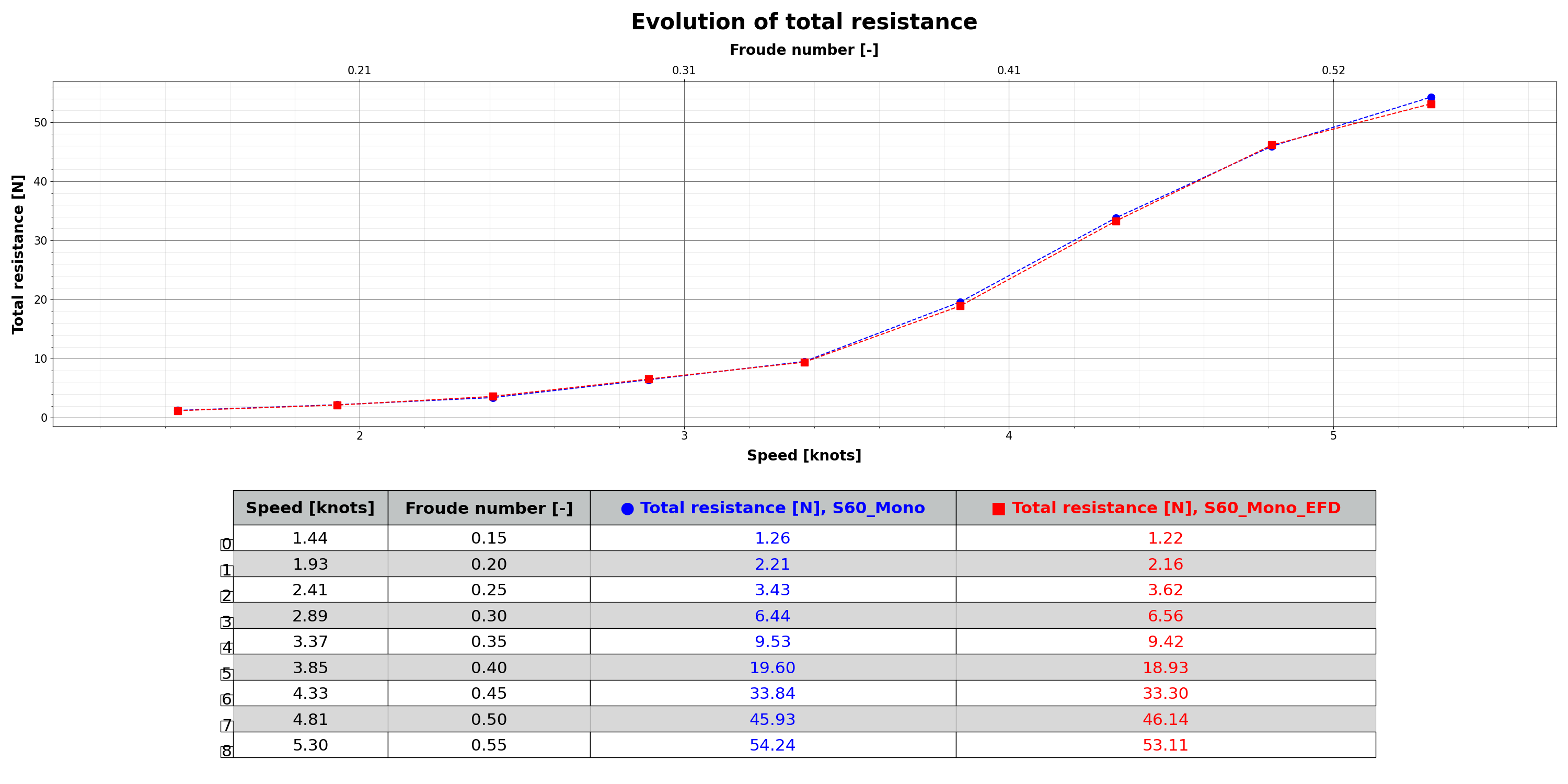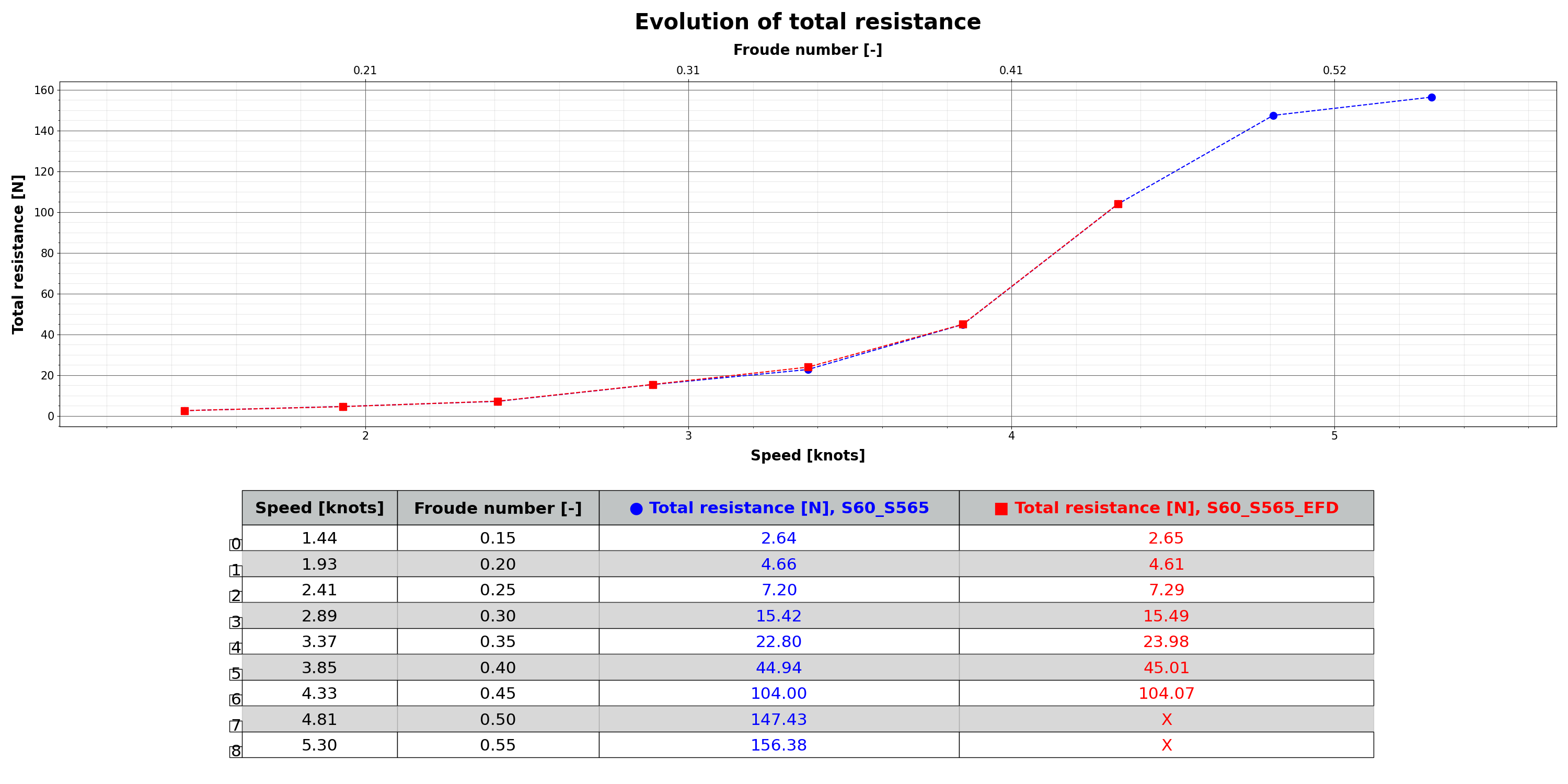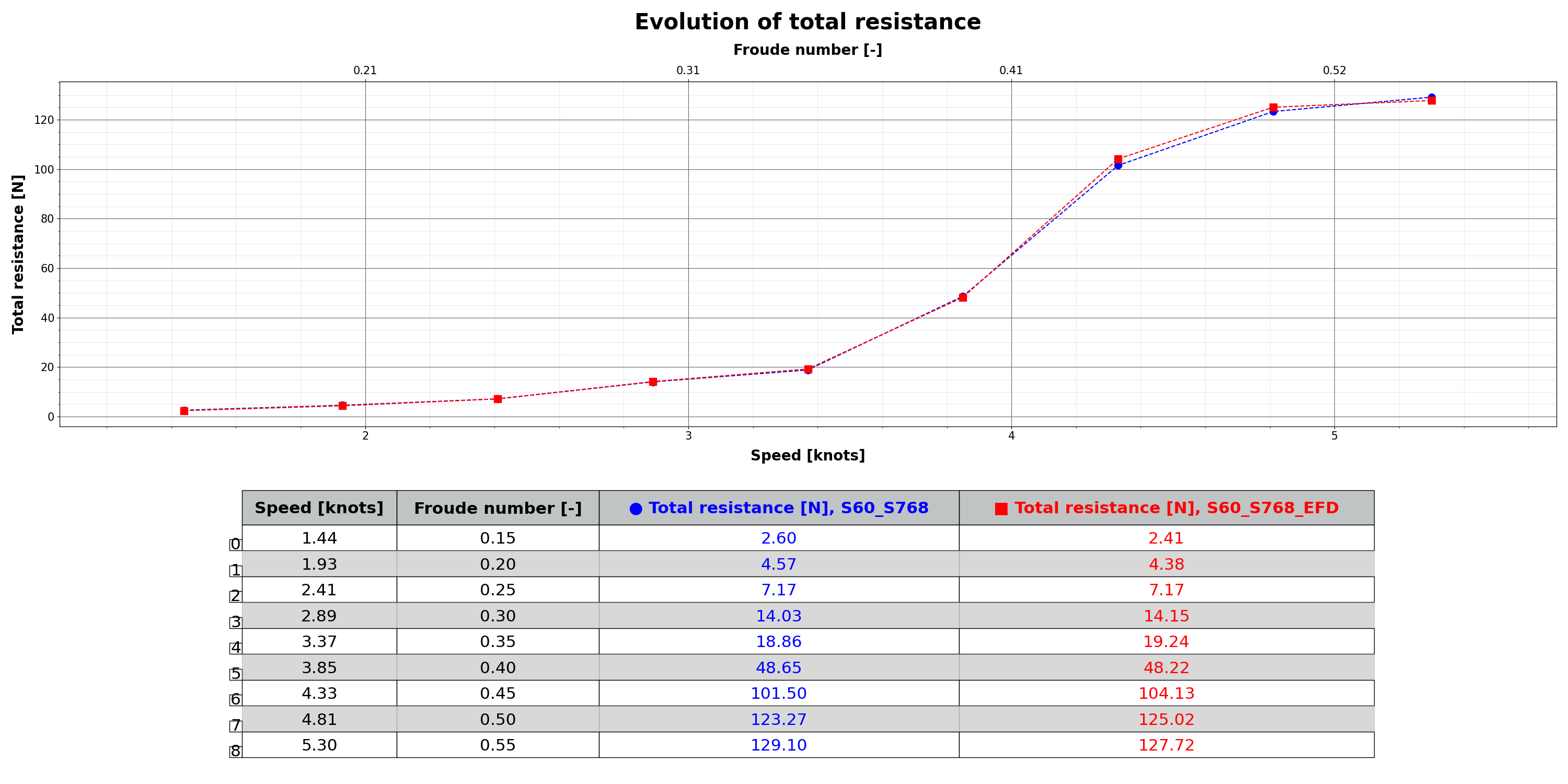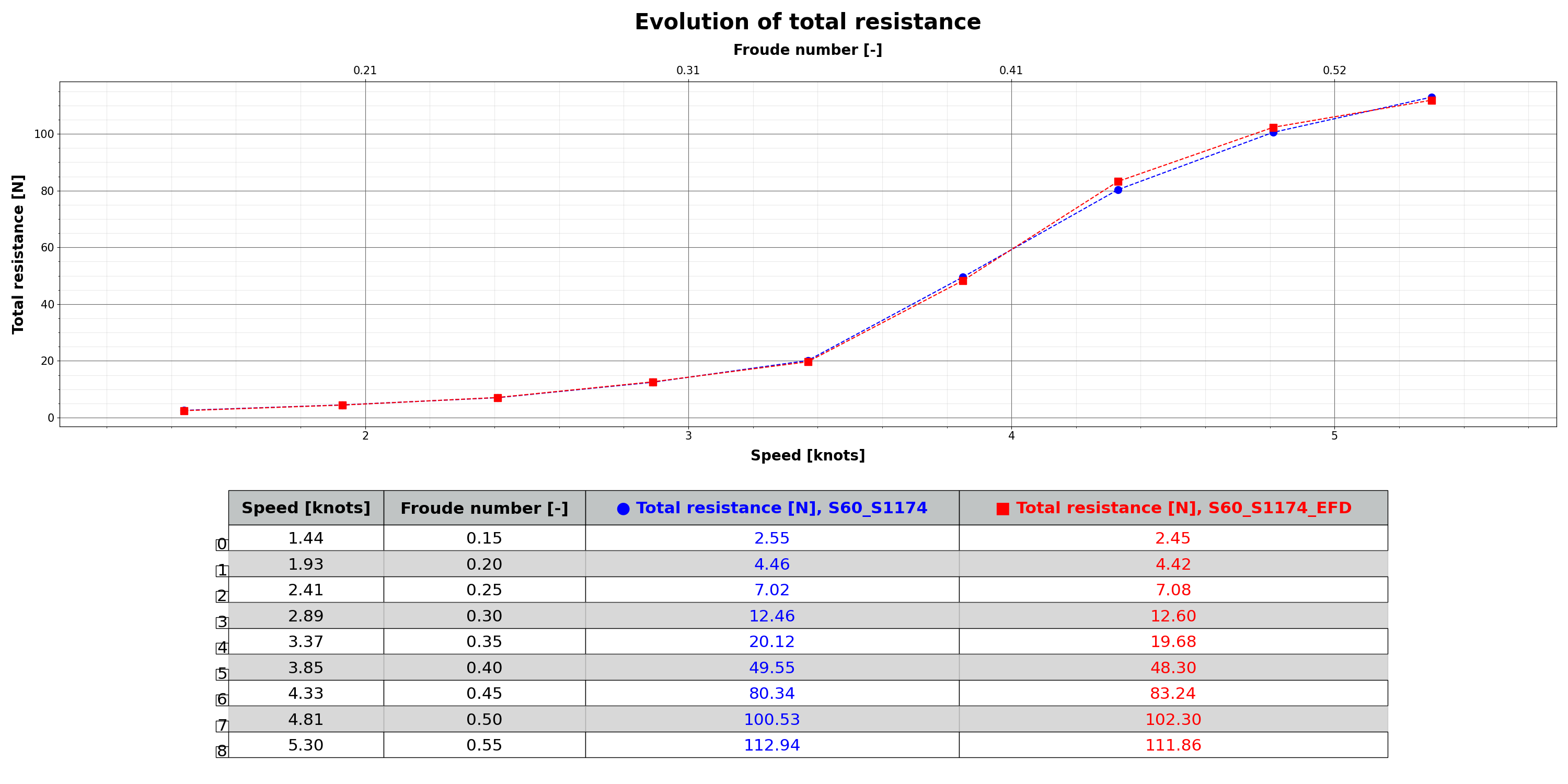
This benchmark provides a comprehensive validation study on the Series 60 catamaran in calm water, using NepTech’s digital towing tank. The study covers a range of Froude numbers from 0.15 to 0.55 and includes various hull spacings to reflect different catamaran configurations. Key findings compare CFD results with experimental data,
addressing resistance, vessel motions, free surface renderings, and computational time.
The findings highlight a strong correlation between the numerical and experimental results, largely due to the highly similar trends observed in the curves:
- For drag resistance, errors range from -5.25% to +7.88% across different hull configurations, with differences on the order of Newtons.
- The dynamic heave response also showed promising results, with errors on the order of millimetres, although numerical simulations tend to slightly overestimate dynamic heave values.
- Larger discrepancies were observed in the dynamic pitch response, with the numerical model tending to overestimate dynamic pitch.
Some discrepancies observed between CFD and EFD results can also be attributed to uncertainties inherent in the experimental measurements.
Crucially, the primary focus of this validation was to assess the prediction of forward motion resistance, for which NepTech’s digital towing tank was specifically optimized to balance computational efficiency with accuracy.
This benchmark confirms NepTech’s ability to accurately and efficiently predict the dynamic behaviour of a catamaran vessel transitioning from low to medium speeds across varying float spacings. By utilizing NepTech’s fully automated digital towing tank equipped with the latest advanced modelling tools, we conclude that simulations of similar flow types will yield reliable results.






Recent Comments